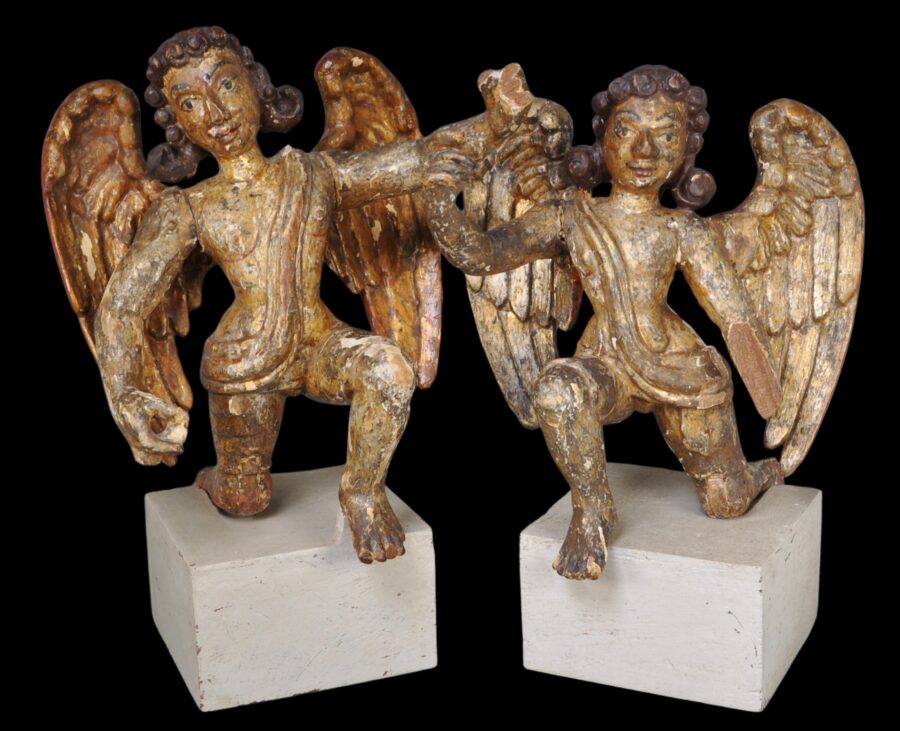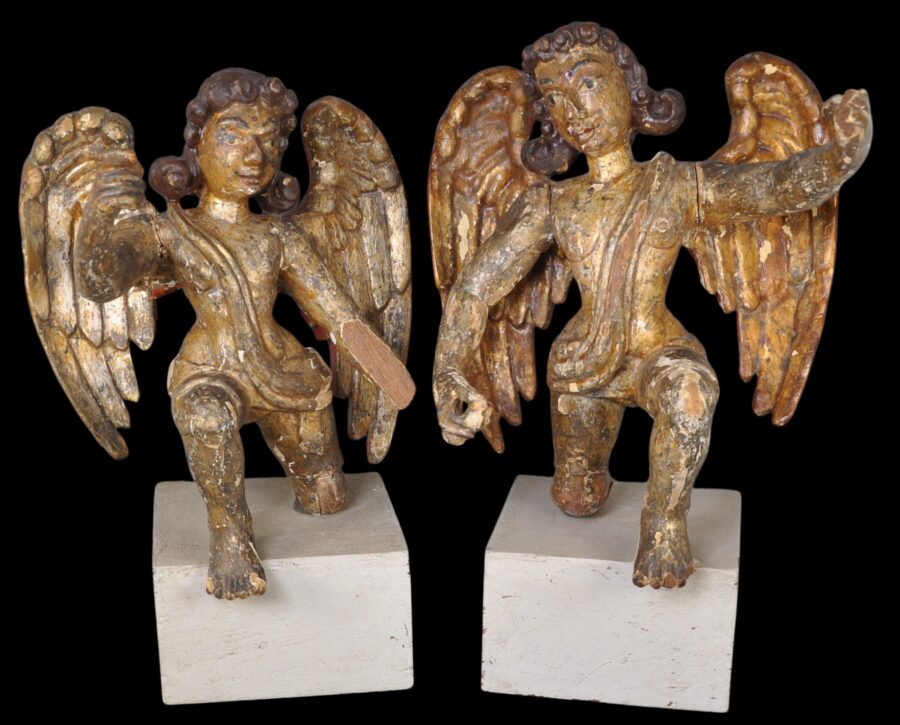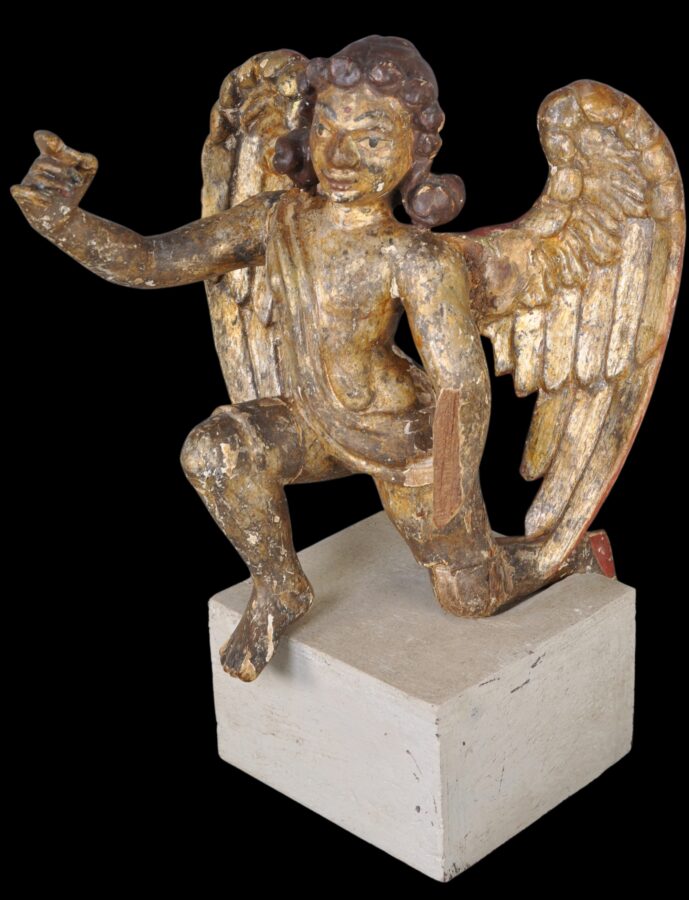Enquiry about object: 9706
French Colonial Pondicherry Indian Gilded Wooden Angels
French Colonial Pondicherry, South India late 17th-early 18th century
height: 30.9 and 33cm, combined weight: 2,048g
Provenance
UK art market
This pair of angels is a rare but excellent example of cross-cultural exchange between French and Indian influences in the small French trading concessions of South India, most particularly Pondicherry. Christian and Hindu elements have been combined in terms of both motif, form and use.
Each is based on a Christian angel but the sashes that fall across their chests emulate the sacred cotton cord worn by Hindus, and on the forehead of each is a small, red tilaka dot, as worn by Hindus for ceremonial occasions, or by the red bindi dot as typically worn by Hindu women after having done their daily puja or prayers.
The wings of each are spread far apart – in Christian tradition, such a motif was employed to suggest a messenger. The wings are gilded, the faces are finely rendered, and the hairstyles of each are very much of their period – copious and styled after the wigs worn by European men of the period.
Each is of carved wood. The details have then been further refined with plaster, and then painted and gilded. Much of the old gilding is retained. The age of the pair is apparent – and there are obvious losses – one is missing a forearm and so on. The wings of one have been stabilised with the addition of a new piece of wood on the reverse as well.
Angels such as these decorated the chariots or palanquins that were used to carry Hindu temple idols through the streets and around temple courtyards during temple festivals in Pondicherry (now Puducherry). They are almost a direct copy of angels used by local French colonial administrators most probably to decorate their sedan chairs and their horse-drawn coaches. As such these angels represent one of the most extraordinary and interesting examples of cross-cultural Indian-European material culture in India, and most particularly French-Indian cross-cultural influence. This is quite a small and rare aspect of colonialism in India because the French concessions in India were small with Pondicherry being the most prominent.
A similar example in the Musee des Arts Decoratifs et du Design in Reunion, is illustrated in Tchakaloff (2018, p, 75-75, and the front cover) and is attributed to the end of the 17th or start of the eighteenth century.
The examples here are mounted on old, white display boxes. There are various losses as mentioned, but then the age of the angels and their rarity is significant. We have not attempted restoration and have preferred to leave them in their original state. It is also remarkable that they have survived as a pair.
References
Tchakaloff, T.N., Recontrer l’Autre?: XVI-XVIII Siecles, Musee des Arts Decoratifs et du Design, 2018.



















